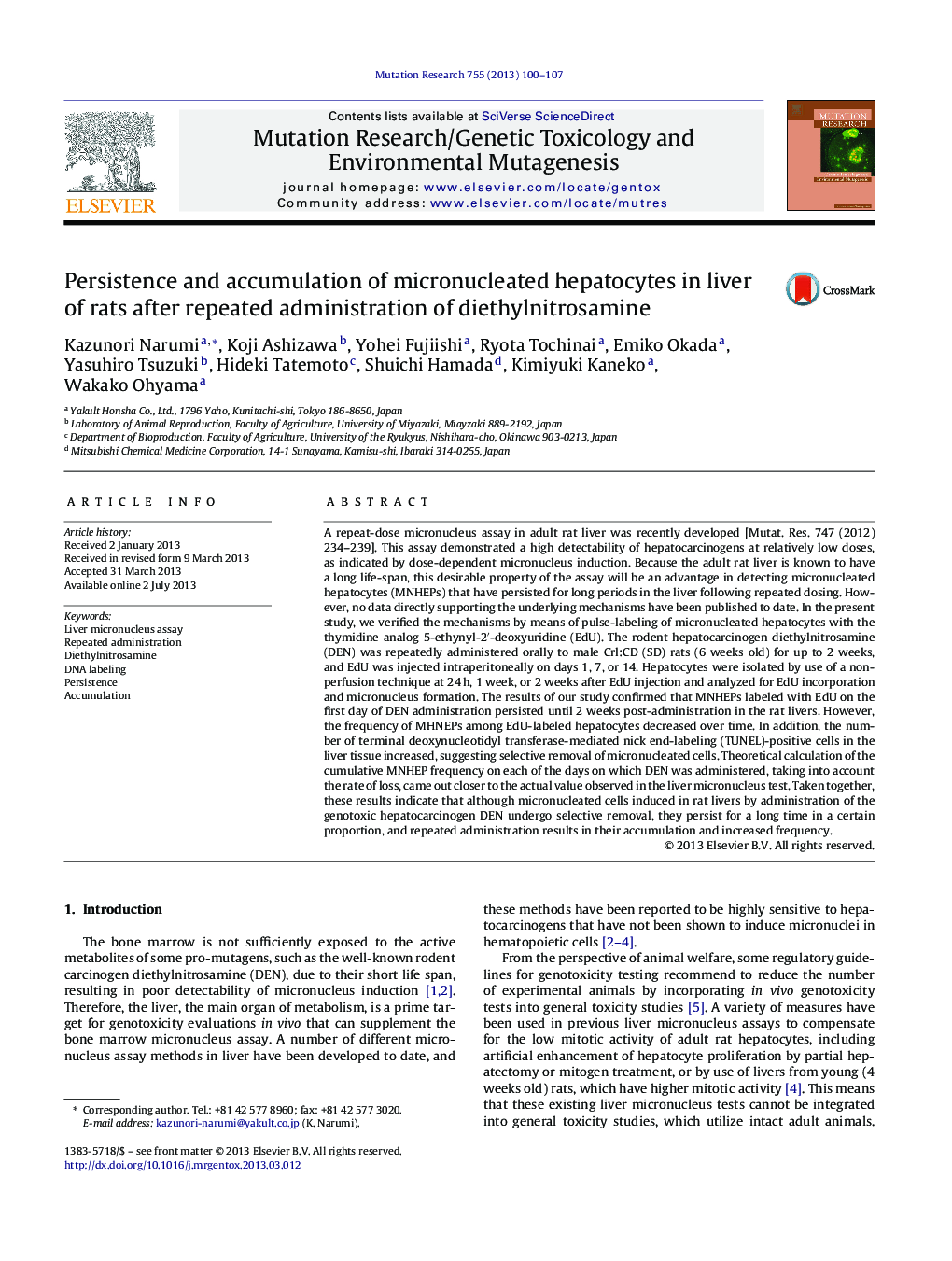| Article ID | Journal | Published Year | Pages | File Type |
|---|---|---|---|---|
| 2148094 | Mutation Research/Genetic Toxicology and Environmental Mutagenesis | 2013 | 8 Pages |
•Long-term persistence of MNHEPs was able to observe directly using EdU labeling analysis.•Cumulative model of MNHEP frequency over time was theoretically constructed.•Theoretical cumulative values were close to the actual values of the liver micronucleus test.
A repeat-dose micronucleus assay in adult rat liver was recently developed [Mutat. Res. 747 (2012) 234–239]. This assay demonstrated a high detectability of hepatocarcinogens at relatively low doses, as indicated by dose-dependent micronucleus induction. Because the adult rat liver is known to have a long life-span, this desirable property of the assay will be an advantage in detecting micronucleated hepatocytes (MNHEPs) that have persisted for long periods in the liver following repeated dosing. However, no data directly supporting the underlying mechanisms have been published to date. In the present study, we verified the mechanisms by means of pulse-labeling of micronucleated hepatocytes with the thymidine analog 5-ethynyl-2′-deoxyuridine (EdU). The rodent hepatocarcinogen diethylnitrosamine (DEN) was repeatedly administered orally to male Crl:CD (SD) rats (6 weeks old) for up to 2 weeks, and EdU was injected intraperitoneally on days 1, 7, or 14. Hepatocytes were isolated by use of a non-perfusion technique at 24 h, 1 week, or 2 weeks after EdU injection and analyzed for EdU incorporation and micronucleus formation. The results of our study confirmed that MNHEPs labeled with EdU on the first day of DEN administration persisted until 2 weeks post-administration in the rat livers. However, the frequency of MHNEPs among EdU-labeled hepatocytes decreased over time. In addition, the number of terminal deoxynucleotidyl transferase-mediated nick end-labeling (TUNEL)-positive cells in the liver tissue increased, suggesting selective removal of micronucleated cells. Theoretical calculation of the cumulative MNHEP frequency on each of the days on which DEN was administered, taking into account the rate of loss, came out closer to the actual value observed in the liver micronucleus test. Taken together, these results indicate that although micronucleated cells induced in rat livers by administration of the genotoxic hepatocarcinogen DEN undergo selective removal, they persist for a long time in a certain proportion, and repeated administration results in their accumulation and increased frequency.
